
On the occasion of Paper Mario: The Origami King, we delve into the evolution that the series has experienced since Nintendo 64 until now.
Paper Mario has been accompanying almost all Nintendo consoles since Nintendo 64 for twenty years and is, by all rights, a worthy sub-series worthy of the merit of being considered one of the most experimental, imaginative and courageous within the Japanese house. The announcement of Paper Mario: The Origami King comes in context marked by the success of the platform where it will be released, Nintendo Switch; and for the sequence of records that new iterations of many of its recurring licenses, the mustachioed included, are reaping.
In the case of Paper Mario, however, the most recent background is not the best. Neither Nintendo 3DS nor Wii U have had the most memorable installments of this saga, with steps backwards in what made it especially idiosyncratic – its approach to RPG – and with ideas that have not quite materialized. This new episode, the sixth in the family, seems to want to recover that spirit from the works of N64 and GameCube.
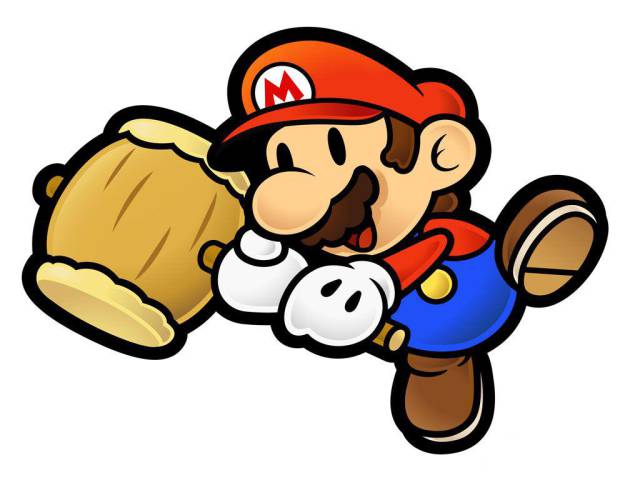
Therefore, this special serves as a tour of the entire series to learn how Paper Mario has evolved until reaching the current moment, with an age of majority already crossed and a title that has on the table the opportunity to be not only a delivery more, but to occupy a transcendent role within the hybrid machine.
Paper Mario 64, where it all started
The 90's was a period of transition for the company to consecrate the change from 2D to 3D and, along the way, a constant development of new ideas sometimes translated into new series. After an excellently received Super Mario RPG: Legend of the Seven Stars (1995, SNES; Square Enix), Shigeru Miyamoto wanted something of his own, something of his, not a commission to another of the greats of the medium.
To do so, they called one of the company's closest second party studios, Intelligent Systems, then really small and limited in resources. But they were not unknown; in fact, his resume was already exalted, with works such as Tennis, Duck Hunt, Wrecking Crew or the first Metroid, where they were also immersed before entering his fetish saga, Fire Emblem. It was then that Paper Mario (2000, N64) was delegated to them, the work that opened the doors for them to add another more long-running series to their catalog.
Ryota Kawade, a designer with experience in Wario’s Woods and Panel of Pon (Tetris Attack) for SNES, was chosen to direct this new bet by Nintendo. In fact, it would take care of it in the first three iterations. He is one of the main responsible for Paper Mario being an adventure with a declared role-playing component, although it was not all as easy as it seems in a simple paragraph.
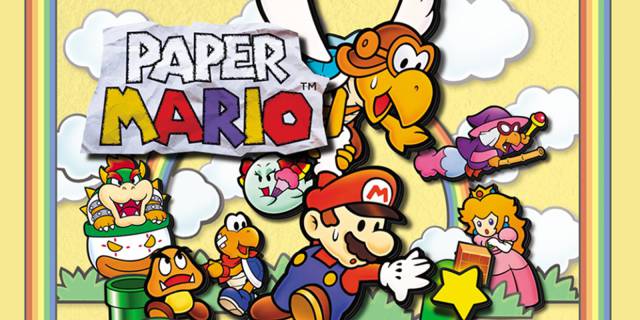 Paper Mario 64
Paper Mario 64
The game started as a project for Nintendo 64DD under the name of Mario RPG 2, hence the intention to continue as a sequel to the work of Square Enix. This expansion system, which was connected to the console through the EXTension Port, was a true commercial failure, so the projects planned – and even announced – for him ended up migrating to the console under the traditional cartridge system of the hardware.
The idea was simple: eight perfectly differentiated chapters where, how could it be otherwise, Princess Peach is kidnapped. Our homework? Save the Mushroom Kingdom from Bowser's plans. From there, a platform adventure, dungeons, exploration, character enhancement, abilities … The reminiscences with Super Mario RPG are clear, but it was also perceived that this work was not so much intended to tell a too deep and complex story, if not more casual; with a sense of humor marked by constant jokes, irreverence and the essence of the plumber in a paper world. The result speaks for itself: outstanding ratings on aggregator portals and the realization that this has only just begun.
Paper Mario: The Millennial Door. GameCube history
After the excellent reception garnered by Paper Mario on Nintendo 64, it was a joy when those of us who had just received a GameCube in our homes at the time saw in the printed video game magazines of the time that that little mustachioed man in the form of paper was going to also have a presence in the new household of Nintendo. Paper Mario: The Millennial Door (2004, GCN) is the name of this considered excellent delivery; surely the best of all along with the first. An episode that is not at all disruptive with the formula started in the previous one, but which showed that it did not take major changes or sudden turns to make this concept a saga and, from it, a series with its own identity.
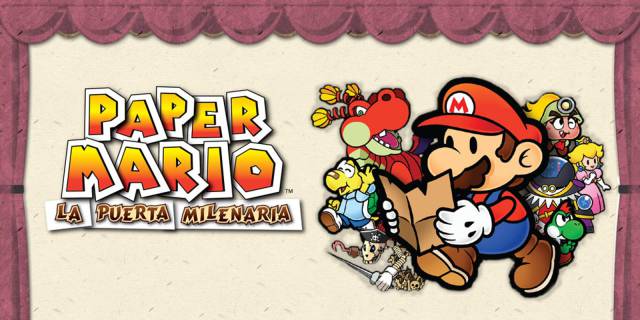 Paper Mario: The Millennial Door
Paper Mario: The Millennial Door
Unlike its predecessor, the first thing that caught the eye was its finishes on a visual level. We are talking about a 128-bit system, one of the most powerful consoles of the moment and with a much more vivid and successful color palette. From there, an interesting story, deeper mechanics, transformations and abilities of all kinds for the protagonist. It was perhaps the high that kept the bar throughout the adventure (more than twenty hours) is what we continue to remember best; An absolute variety of levels and moments compensated by a sense of humor that was no longer a coincidence, this way of telling the story was here to stay.
After the success of the first Mario & Luigi from Game Boy Advance, this installment inherited aspects and improved them. As we advanced in the adventure, you could see that the combat system gave a lot of scope to the strategy, to think about the best way to find the pattern of weakness of the enemies. But it did not fail: a simple, intuitive and clear scheme for all kinds of audiences; Perhaps the most difficult thing to achieve considering that the genre had reached the best version of itself in Japan in the previous years.
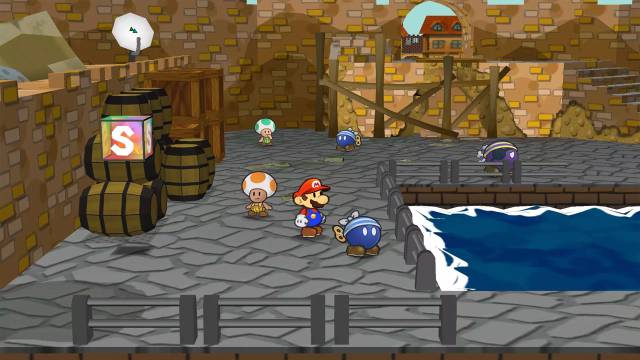
Ryota Kawade, who would gradually pick up stripes within Intelligent Systems, was accompanied in the direction by Shigeru Miyamoto and Satoru Iwata. It was the former who preferred to be a continuityist – an opinion that would change radically in 2009, as we will see later in this article – and the supervision of Kensuke Tanable. Playing safely from the grassroots, with Super Mario RPG, Paper Mario and Mario & Luigi Super Star Saga as references, allowed the development to be much more fluid than that of future episodes. They knew what they wanted to do and, more importantly, how to do it. Perhaps it was his variety of enemies, not as extensive as could be expected, that left us on the verge of an excellent delivery (although for many it is). Being able to enjoy it in Spanish and with that same in a still young GameCube was something that is now common, but then it was not so much. Final bosses, dynamic combat and animations that have aged wonderfully leave this as the maximum reference in the series. A too long shadow that, surely, has not yet been overcome. Fans are asking for a remake.
Super Paper Mario: when role and platforms shake hands
Super Paper Mario (2007, Wii) is, today, one of the most current and best-aged works in the entire series. It is also one of the most beloved and, as a consequence of the success of the platform where it was launched, Wii, also one of the most successful. This is where many of those who are now fans of the saga started.
Improving what was seen in GameCube was not going to be easy. The Nintendo cube, although it was not the expected success on a commercial level, had new bets on really good classic sagas, which were remarkably high in most cases. Wii now had slightly more powerful hardware and, above all else, a controller with capabilities to recognize motion control: the Wii Mote. Nintendo this time counted on the always sensible Kensuke Tanabe, who has been involved in a massive amount of Nintendo's intellectual properties and knows the big N like few right now. He delegated Ryota Kawade for the third time to the management. Now came the biggest challenge: directing a new episode for the most successful console in the history of the company.
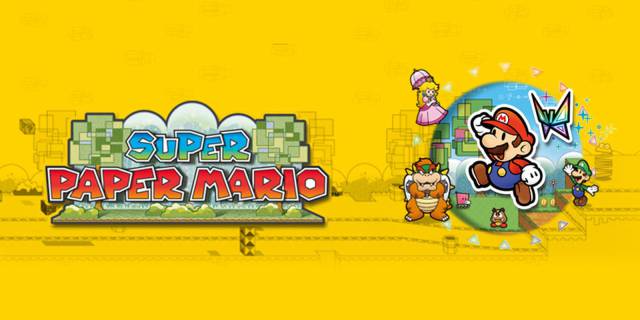 Super Paper Mario
Super Paper Mario
"After developing the previous chapter, Paper Mario: The Millennial Door, I wanted to make a game that surprised people with new features within the Paper Mario concept (…) And I came up with the idea of switching between 2D and 3D," he said. in an encounter with Nintendo back in 2007. And that is the main characteristic of this installment, which not only embraced mechanical role playing but also adopted a more platform-like structure of worlds and levels. "So we decided to decline the traditional RPG combat system" and turned it into an action adventure with roleplay elements.
Finding a balance that would satisfy all team members was not easy. They based the idea on constant trial and error until they found what they call a harmonic system between the 2D and 3D worlds. "But many of the side scrolling worlds in Super Mario Bros. couldn't be transformed into 3D at first." So it was time to squeeze the coconut, especially in the design department: they had to do each level twice. On the one hand, when playing in 2D; on the other, include the changes —Wii Mote and its included command scheme— when changing to three-dimensional advance.
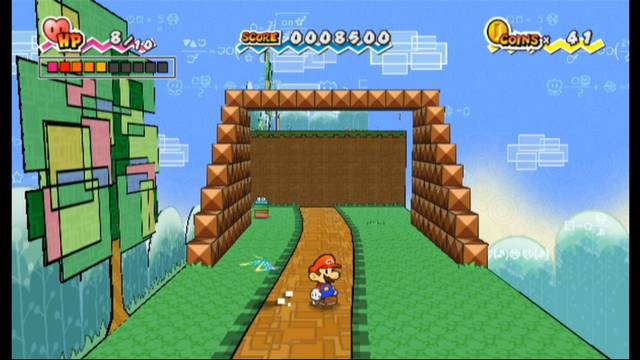
There were, in addition, two options: allow the player to rotate the style whenever he wanted or for the title itself to introduce those changes. By choosing the former, the feeling of exploration and of having in our hands the power to choose when and how it was really satisfactory; especially when it comes to discovering hidden areas or unreachable secrets depending on whether we were in 3D or 2D. In order not to abuse it, an energy meter was included that, in case of exhaustion, made us lose energy. The balance was total, very well measured and, now that thirteen years have passed, he still feels fresh, agile and comfortable at the controls. One of the objectives is that, in the phases of platforms, we felt the Wii Mote as if it were a NES controller. They wanted to transmit the touch of yesteryear, the retro touch; not only with winks, jokes and references, but also with elements typical of the main installments of Super Mario in the traditional platform series of NES and SNES. It was, at the time, the best appetizer possible before the arrival of the highly anticipated Super Mario Galaxy, a role that he knew how to play with full guarantee.
Paper Mario: Sticker Star; complex development, break with the established
Paper Mario: Sticker Star (2012, 3DS) was one of the most anticipated titles of a still newcomer Nintendo 3DS, ending its first full year on the market, 2012, with this new installment in the series; the first original on a portable console. Its development was long, complex and with many changes. Transferring everything to the stereoscopic console, endowed with the ability to enjoy 3D without glasses, was one of the incentives of the work in terms of design; That is why he introduced the stickers, to bet on that visual differentiation of layers and the depth of the planes. The result was not as satisfactory as the fans would have liked; in fact, it is considered the biggest stumbling block in the series due to its recursion, its excessive duration —especially in the initial stages— and a total and declared departure from the RPG, something that did not hurt the fans who came from two such publications. brilliant as were those of GameCube and Wii, for sticking only to these last two. Fortunately, he did not change one of the hallmarks of the series: his sense of humor.
 Paper Mario: Sticker Star
Paper Mario: Sticker Star
Intelligent Systems returned to the forefront of the work with Naohiko Aoyama in front, unlike Wii so many years before, where Ryota Kawade served as helmsman. Having new sap in the team of such a consolidated saga is always a double-edged sword; but after having spent a whole five years without new appearances —Nintendo DS did not have a Paper Mario of its own—, it was necessary to change things. Or so Nintendo believed, of course.
Development began in late 2009. At the time, they were clear that they wanted to take advantage of the Nintendo 3DS hardware, dual display, and stereoscopic capabilities; However, when Miyamoto played the prototype, he insinuated that it was very similar to Paper Mario: The Millennial Door … and demanded changes.
We can't leave Vanpool's name out of the equation in this title. We're talking about a video game company based in Shibuya, Tokyo, a small team that takes care of taking on generally outsourced work from Nintendo with veteran company experts. So much so that Taro Kudo, co-director in Vanpool and responsible for stage management, had previously worked in Super Mario RPG: Legend of the Seven Stars (SNES), although in Sticker Star there is little or nothing of inheritance of said Square Enix work.
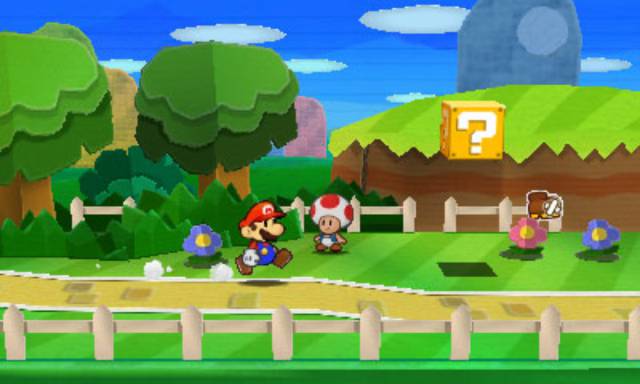
The farewell of the series to the role was one of the main topics of conversation in any forum, because at that time social networks were not the main source of collective reverberation. In an Iwata Ask whose reading is more than recommended for any fan of the series, Kenji Nakajima, project manager, acknowledges that it was not easy to enter the path of the role there for Nintendo 64, but Shigeru Miyamoto was now looking for something else: "It was a real challenge. After making the decision that IS would create a second Super Mario RPG, we faced the problems of deciding what it should look like to introduce a different theme than the main series. ” That work ended up becoming the first Paper Mario.
The producer, Mr. Kensuke Tanabe, is the one who revealed that Shigeru Miyamoto requested these changes; Going for something different and making Paper Mario just something else, not necessarily an RPG: “The most important reason was that Miyamoto had said that he wanted us to make a big change to the atmosphere of Paper Mario this time. I heard that Miyamoto was wondering how to take advantage of the Super Mario series and came to weigh certain things. "
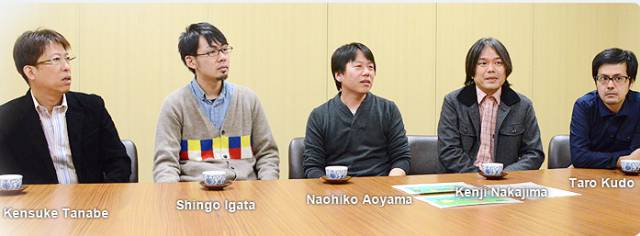 Paper Mario: Sticker Star (2012, 3DS) development team during an Iwata Question
Paper Mario: Sticker Star (2012, 3DS) development team during an Iwata Question
And the idea of the stickers appeared. “Then the idea of using stickers came up. At the beginning, the plan was to use stickers here and there to solve puzzles on the map and elsewhere, but we thought: 'If we are going to do this, we will also have to use them in the rest of the game, like in combat', and so on. we rethought all the game mechanics ”, he adds. This caused the game to slow down its progress and not arrive in time for the first year of Nintendo 3DS's life. Along the way, changes in its structure and design to integrate the stickers. At the time, Tanabe was up to two things: On the one hand, Donkey Kong Country Returns (2010, Wii); on the other, Paper Mario: Sticker Star. Until the first one was finished, he could not join the second, but he incorporated Mr. Kubo (Vanpool) in the direction to be able to move it forward: they couldn't cope.
We all know the result: a remarkable game, with ups and downs, but a lot of fun. That fun tasted little, in a sense, due to the enormous limitations of its battle system and an absence of role-playing aspects that were not fully understood among the most veteran of the place.
Paper Mario: Color Splash, new equipment and evolution of the 3DS idea
Paper Mario: Color Splash (2012, Wii U) is the latest installment in the series, a title released in 2016 for Wii U when the name of the Nintendo Switch already existed in our head, although it would not be seen in stores until March next year. It was an adventure with a certain farewell flavor; although his team found members who had not previously worked in the franchise. Although far from the main role of the original episodes, its combat system based on cards and paintings was really varied, not to mention the best audiovisual section we've seen so far. In addition, it improved with respect to Sticker Star in its task of posing of puzzles or adventure, which going more with each hour.
 Paper Mario: Color Splash
Paper Mario: Color Splash
With this return, its producer, Risa Tabata, was clear that the cornerstone of production should be color. The reception of the title at E3 2016 was far from good; So much so that its official trailer for the presentation at the Angelina fair brings together hundreds of negative messages and more dislikes than likes. But what could be the reason? Without a doubt, the fact of continuing in the wake of Sticker Star for the stickers, for the linear or guided adventure, and not so much the depth in the combat system and the commitment to the RPG that had worked so well on Nintendo 64, GameCube and Wii. The community wanted one thing, but Nintendo was betting on another with this episode of Wii U.
It was early to comment, however, because a trailer is just that. And if not, let them tell Super Mario 3D World three years earlier, when the E3 2013 trailer drew all sorts of criticism, shortly before its release, leaving fans and critics stunned with those jazz songs and more than good vibes in the playable plane.
In a meeting with USGamer, he explained the genesis of this setting and artistic inspirations. “As for how we got to focus on the color theme… Obviously, you know we've made this game in conjunction with the Intelligent Systems studio. In it, there is a person in charge under the name of Ikunami, who mentioned that at this moment his children had taken a liking to that of painting, of painting different colors, so we thought that perhaps it would be something that fit as the basis of the game. And that was basically the starting point. " They wanted the game to enter through the eyes. At the end of the day, it was also the first iteration of the HD series and the first to be able to benefit from the asymmetric system proposed by this hardware. As it was his first time under this responsibility and he had no previous experience with the series, "I wanted to approach it as an enjoyable experience for those who were totally new to the series," he acknowledged.

"The Wii U Gamepad, its touch screen … We thought it would be fun to use that touch screen for your cards and throw them at the television; therefore, we use cards in the battle system. " The title wanted to stand out from what was seen on Wii, closer to the platform style, and studied formulas to convince with elements that are just as imaginative but with more exploration and variety in the playable; not for that reason deeper.
Although Nintendo tried to justify why they had definitely moved away from the RPG style, not everyone digested it the same way. "As you already know, the first Paper Mario was more like an RPG, and Mario & Luigi are also RPGs. Yes … Obviously, we have those two RPG series, both allow us to offer new and varied experiences to players (… ) In the Paper Mario series, meanwhile, we want to focus more on those elements. "
What did not change regarding Sticker Star is the director of the story and in charge of the dialogues, Taro Kudo, who has been the maximum responsible in all this time for the sense of humor, gags and other jokes that are part of this nice subset of the Mario universe. It also transcends that they acknowledge having always had certain difficulties in locating (which is not the same as translating) this type of video game in so many languages, but it is a pleasant difficulty because that means that these lines of dialogue are endowed with idiosyncrasy .
All in all, Paper Mario: Color Splash received criticism of all kinds to keep a 76 in Metacritic, far from those first installments that have so deeply penetrated the Nintendo community. Nowadays it can be played on Wii U in physical and digital format through the eShop. We do not know if it will end up eventually coming to Nintendo Switch.
Paper Mario: The Origami King
And now that? That is what we all ask ourselves. With a scenario like the one that was left in 2016 with Wii U, when the name of Paper Mario began to sound for the Nintendo Switch, we came to think that it could be a direct port of Color Splash that we received in the first place. Finally, this has not been the case and we can interpret it as a declaration of intent; above all, from what we have seen what this episode promises: a return to the origins. We can't rush our estimates just yet because, after watching just one trailer, we would be wrong to speculate. But there is already enough information to make several things clear: the approach to the first two games is undeniable.
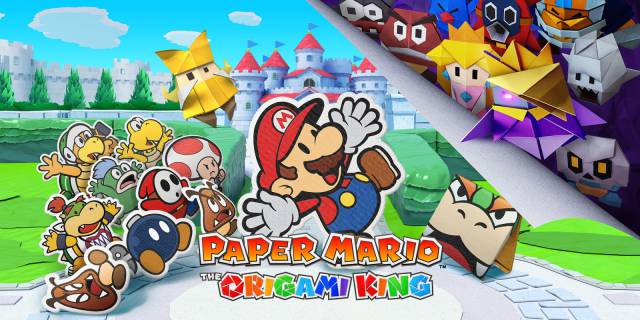 Paper Mario: The Origami King
Paper Mario: The Origami King
2020 will mark the twentieth anniversary of the series and, with The Origami King, an adventure with more combat strategy awaits us – renewed, in fact – and a variety of levels that makes us optimistic in design and structure. King Olly, a villainous-looking guy, is turning the inhabitants of the Mushroom Kingdom into origami figures. And yes, Peach could not miss, so his kidnapping will be the last straw for Mario to try to reverse the situation. Nothing new under the sun, but the Intelligent Systems that we all know is back with a few additions that have never been seen before, starting with a roulette-based turn-based combat system.
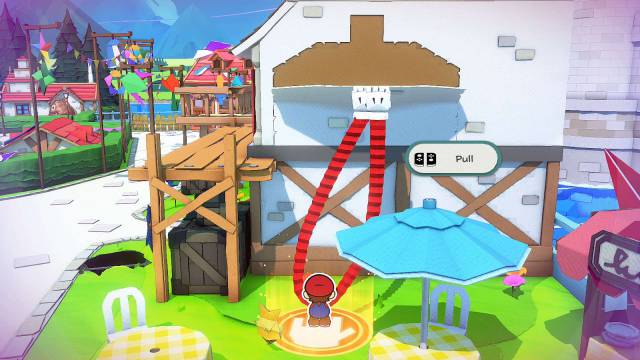
Judging from what we have seen, we will have a circular scenario (the presence of characters returns in the stands!) Where the main task will be to align all the enemies of each of the adjacent rings to inflict damage to the greatest number of enemies with a just hit. In this way, if we cunningly rotate those rings, we will squeeze each turn and be able to amortize attacks with more damage at the cost of a lower price. These aspects also remind us of the Mario & Luigi saga, only here Mario is at the center of the target and is also an easy target for rivals. We will have to be careful.
It is rash to point out right now where this project will lead. It is more the desire than the certainty that invites us to believe that we will have a role-playing game seasoned by humor, platform and adventure. If so, maybe this summer is packed with (even more) good news.
References:
- Iwata Asks: Paper Mario: Sticker Star – Nintendo
- A conversation with Risa Tabata; Paper Mario: Color Splash – USGamer
- Interview: Super Paper Mario – Nintendo
- Miyamoto Reveals Secrets: Fire Emblem, Mario Paint 64 – IGN

